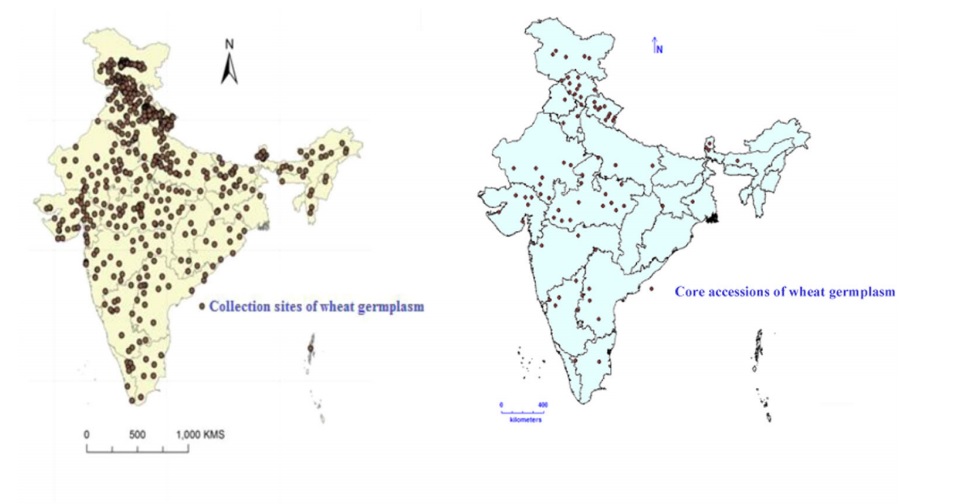Characterization of wheat germplasm conserved in the Indian National Genebank and establishment of a composite core collection

The use of untapped plant genetic resources of wheat (Triticum spp.) can enhance its productivity. In the present study, we characterized 22,416 accessions of three different species of wheat conserved in the Indian National Genebank using 23 qualitative and 12 quantitative traits to develop a core set. These accessions were highly diverse on the basis of range, coefficient of variation, and Shannon–Weaver diversity index. Initial grouping was done on the bases of species and origin, and thereafter, agromorphological data were used to develop core sets for each species group using the heuristic approach with PowerCore. Finally, a composite core set was constituted comprising 2,226 accessions, which included 1,779 accessions of bread wheat (T. aestivum L.), 394 of durum wheat [T. turgidum L. subsp. durum (Desf.) van Slageren], and 53 of emmer wheat [T. dicoccon Schrank; syn. T. turgidum L. subsp. dicoccon (Schrank) Thell]. The core set was validated under field conditions. Also, the coincidence rate of range (CR) (bread wheat, 85.78%; durum wheat, 87.52%; and emmer wheat, 95.34%) and variable rate of the coefficient of variation (VR) (bread wheat, 174.9%; durum wheat, 136.5%; and emmer wheat, 105.81%) were more than the threshold values of 80 and 100%, respectively. The phenotypic correlations among different traits attributable to coadapted gene complexes and total variation shown by principal components in the entire set were also mostly preserved in the core set. The composite wheat core and the trait-specific germplasm sets identified would serve as valuable resources for global wheat improvement programs.